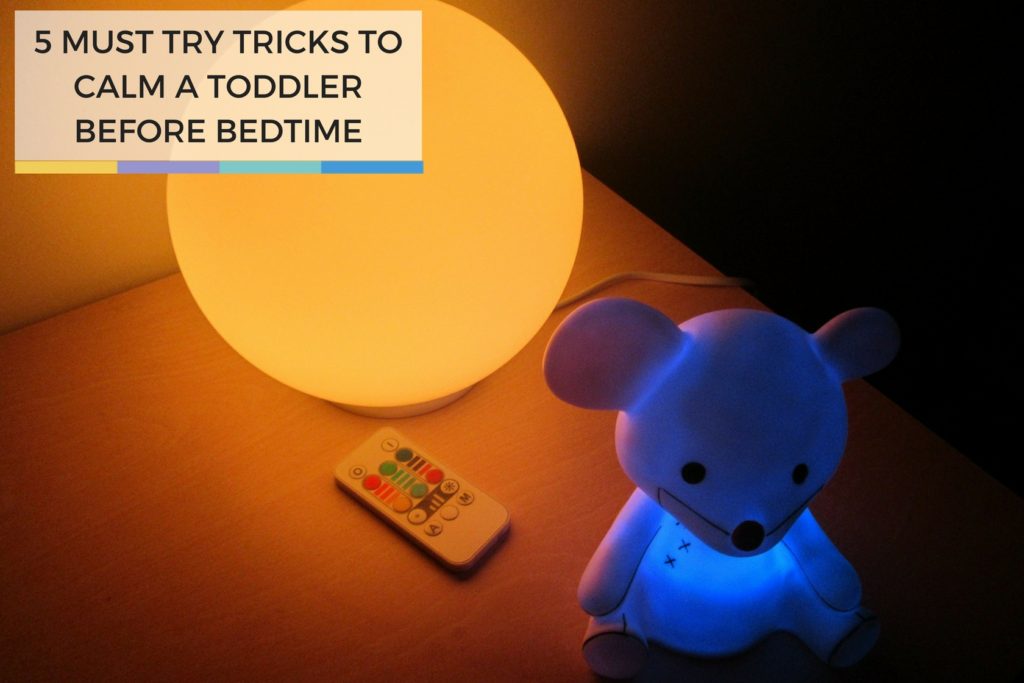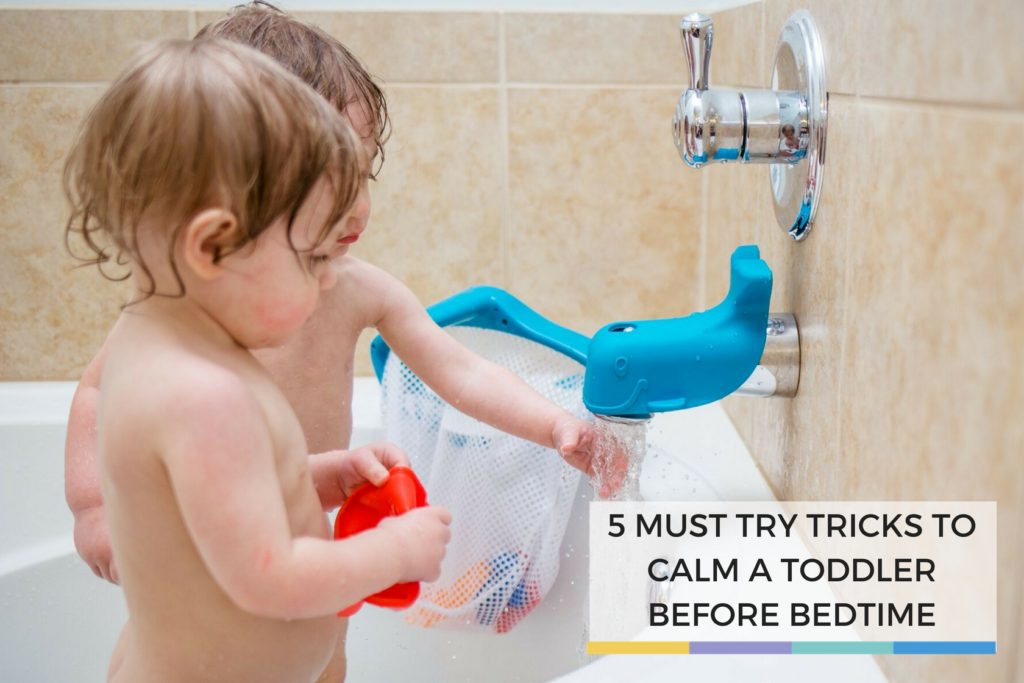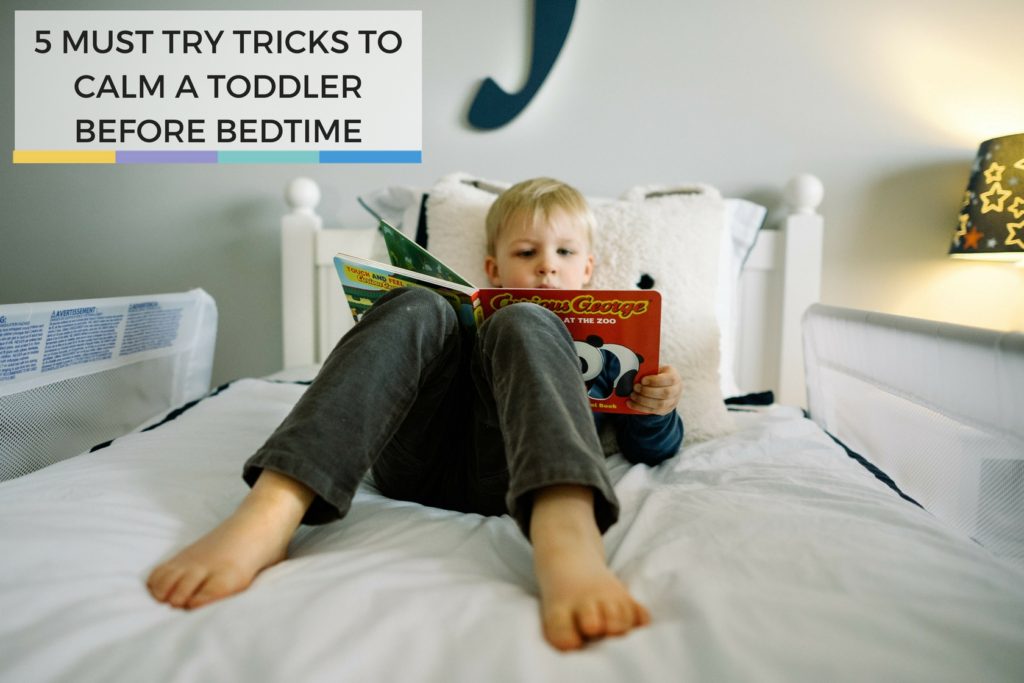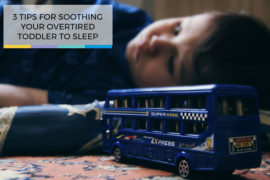A typical day for a modern family involves a lot of running. Running to and from school, zipping to sports and after school activities, then flying through a family dinner to get to get kids bed.
We find ourselves exhausted from cramming so many things into our days, and yet not getting much sleep because we don’t have any time to relax!
As adults, it is important to find some quiet time before bed, our kids need this time too.
Unfortunately, our kids don’t know how to just let go of the day and unwind, so we have to teach them. This is especially true to calm a toddler – they play so hard their brains and bodies don’t know how to unwind.
Because everything is new, and their brains are absorbing so much information relaxation comes hard for a busy toddler.
Since kids get tired at the end of the day, and tired looks different for each child, it is important for parents to recognize their own child’s sleep signs and begin a bed time routine.
Parents everywhere are aware that having a consistent bed time routine can help to ease the transition from play time to sleep time.
But what activities exactly will help calm a toddler and help them unwind? Which steps can you take to help your toddler find his own personal “power button” and turn off his brain for the night?
The following tricks might just be what you need to help your little one learn to relax before bed.
Dim the Lights

You can make a game of getting sleep spaces ready for bed time. We have night lights in each child’s room to allow a warm glow to envelope their spaces instead of the glaring over head lights.
We spend just two or three minutes heading from room to room, transforming the space into a restful retreat.
The kids play follow the leader from room to room while they do this. Encourage them to stretch and move while they do this.
Try getting them to walk like an elephant, or crawl like a turtle (this is their last game before bed) to get the last wiggles out.
Get Ready for Tomorrow.
Help eliminate the stress of the next day by getting items together for your morning routine now.
Young children can help by laying out their socks and underwear for the morning. Older children can help to pack lunches or lay out their backpacks.
This can help eliminate their stress about getting ready in the morning, and mom and dad’s too!
Turn Bath Time into a Relaxing Spa

We used to let our kids bathe together and play. It helped to save time and was a nice play time for them.
Now, we know that we can help our kids to relax by making bath time count as part of their wind-down routine. We add lavender scented oil to the tub and turn on soft music instead of splashing and playing.
Hair washing becomes a soothing massage, and we sing gentle songs instead of racing tug boats. (The kids like this just as well too!)
We still let them get in the tub together, but they know that it’s a quiet time activity now, instead of a play time.
Calm a Toddler Through Reading

Set aside at least ten minutes at bed time to read. Snuggle into a comfy chair and let your child choose the book.
If you have more than one child, let each child choose a book.
Allow your voice to maintain a gentle volume and take time to talk about the story, find things on the pages, ask your kids what they think will happen next.
Not only are you helping build reading comprehension skills, but this quiet time helps their minds to slow and settle. (Remember not to turn on those big, bold, lights again!)
Use a Timer
Letting children set the timer can be a great tool to allow them to take responsibility for bed time. The timer can let your child know how much time is left for reading or bath time before they need to get themselves into their bed.
You could also try a specific bed time song, something soothing, that allows children to know at song’s end they need to be tucked in.
Remember that teaching your child to calm himself down is a process. They will need guidance and reassurance as well as consistency for this process to work.
To calm a toddler, have patience while you introduce these relaxation strategies. Once it becomes second nature, your toddler will begin calm himself for bedtime.






Comments are closed.